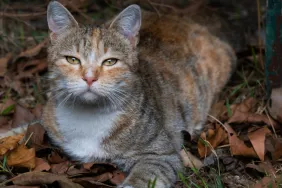In recent years, Australia has been facing a major ecological crisis. The country’s cat population, both feral and pet, poses a serious threat to its native animals. According to The Guardian, cats are responsible for killing more than 300 million animals each year.
While cats kept indoors can cause no harm to wildlife, when left unattended outside, these furry companions can prey on small reptiles, birds, and mammals. With many indigenous species struggling to survive, the country has adopted various policies over the years to curb its feline population — including culling — leaving their future uncertain.
History of cats in Australia
What makes the cat problem unique in Australia is the fact that felines are an invasive species in the country. They were first brought by British settlers way back in 1788 to control rats and rabbits.
Since they are not indigenous to the region, cats did not evolve alongside other native animals. As a result, cats have caused the extinction of around 20 endemic species in the country. Ever since their arrival, they have spread pervasively across the country and have proven to be highly adaptable to different environments.
“Cats are beautiful animals; they’ve got a good design. And that design [means] they’re really good at killing animals,” Trevor Bauer, who works with the Australian Wildlife Conservancy, told The Guardian. “Unfortunately, for the cat, they’ve been introduced to an area where they don’t really belong – the Australian ecosystem.”
Role of Australian cat owners
Cats have been quite popular amongst pet parents in Australia. Over the last few years, cat ownership in the country has gone up. At this time, about 33% of households in Australia have feline companions.
While feral cats have done the most damage, Australia’s pet cats, most of whom are allowed to roam freely by their owners, have also proven to be quite dangerous to native species. Quite often, owners are unaware of their cats leaving the house and roaming outside. To make things worse, pet cats who go missing or are abandoned unsterilized add to the already growing feral population.
According to Sarah Legge, a Biodiversity Council member from the Australian National University, cat containment could be an effective solution to tackle the problem. This means cat owners need to ensure their pets remain indoors or within specially designed enclosures known as “catios.”
“I think that’s the change that we will see over time,” she said. “Rather than cats just disappearing and people deciding that they don’t want a pet cat because cats are bad for wildlife, they will say, ‘OK, so how can we have cats in a sustainable and ethical way?'”
Measures taken to control and contain Australia’s cat population
According to The New York Times, back in 2015, the Australian government came up with a plan to cull two million feral cats over the following five years. A number of extreme methods were used to try and eradicate the cat population across the country, including dropping poisoned sausages from the sky, shooting, and more.
Naturally, this provoked the ire of several animal rights advocates. Noted British singer Morrissey, who’s also an animal rights activist, described the plan as “idiocy” in a statement obtained by The Guardian. He said, “We all know that the idiots rule the earth, but this is taking idiocy just too far.”
French actor Brigitte Bardot also criticized the plan. As per The Guardian, in an open letter to Australia’s then Federal Environment Minister Greg Hunt, Bardot wrote, “This animal genocide is inhumane and ridiculous. In addition to being cruel, killing these cats is absolutely useless since the rest of them will keep breeding.”
Local governments have also implemented various measures, including cat curfews and cat containment rules. According to the BBC, around 30% of Australia’s cat owners manage to contain their felines.
Last year, the Australian Capital Territory introduced new cat containment requirements for all cats born after July 1, 2022. As per the rules, pet parents need to ensure their cats stay on their premises throughout the day.
According to Invasive Species Council director James Trezise, the containment rules benefit cats as well. Felines with “controlled access to the outdoors will live up to 10 years longer than free-roaming cats.”
“They’re not going to get hit by a car, mauled by a dog, or pick up diseases,” Sarah Legge said. “As long as you’re providing a behaviourally enriched environment, at home or in the catio, the cat’s better off.”









